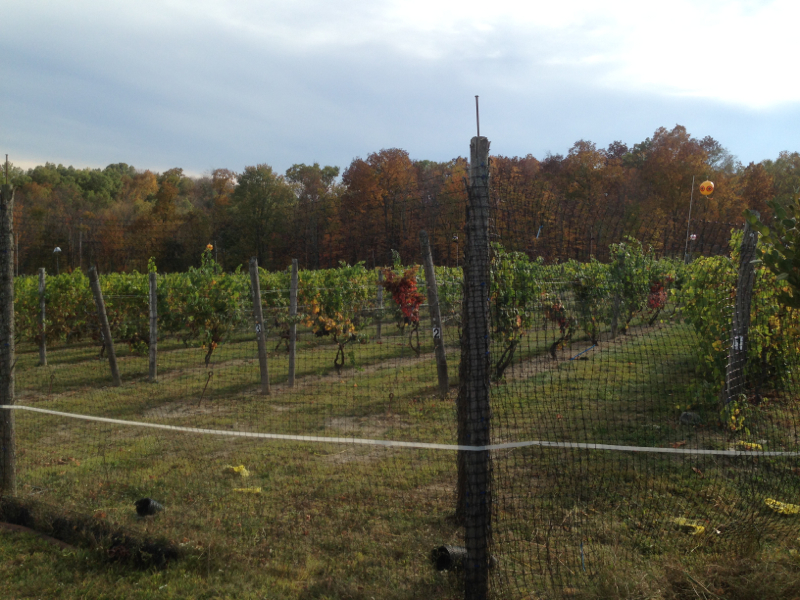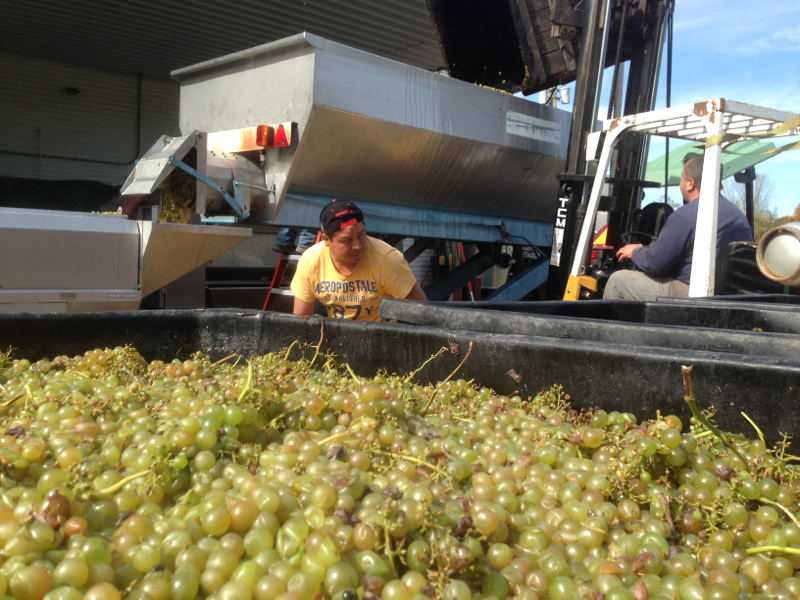Observations from TasteCamp 2014
Outstanding pinot noir, cabernet franc, and more in New
York’s Hudson Valley
Oct 15, 2014
The concept behind TasteCamp is simple: it’s impossible to
taste the best of an entire region in one weekend, but we can certainly try. I
have enjoyed past TasteCamp experiences and was thrilled to attend this year’s
event in the beautiful Hudson Valley, a few hours north of New York City.
Millbrook chardonnay harvest and grapes
With cold winters, spring frost, and the threat of autumn
hurricanes throwing constant challenges at wine producers in a state that’s
only now beginning to achieve worldwide recognition in wine, the Hudson Valley
is an exciting and demanding wine region. The nearby city and its restaurants
and moneyed locavores provide growing retail support and strong tourism, but
this fairly young region must also make a case for both high-quality hybrids
(more on that in a moment) and a handful of really promising vinifera options.
Here are my top takeaways from this excellent event. I’m grateful to the
growers, winemakers, winery staff, and owners who took time from their busy
harvest schedule to share their livelihood with us.
Tocai Friulano in New York may be an excellent idea.
Millbrook’s 2013 tocai friulano, one of the first wines I tasted last weekend,
made me wonder why I don’t see more of the grape in New York. It was totally
recognizable for the style, elegant and fresh and rich and round.
”Find the vinifera that works.” This line from Robibero
winemaker Kristop Brown really stuck with me. Having spent most of my wine life
in cool or cold regions, I’ve encountered the tension between hybrids (which
are weather-hearty and easier to grow than vinifera, but lack the notoriety and
are often associated with lower quality) and vinifera (which are the best-known
of wine grapes but may or may not ripen properly in certain climates) in many
forms. I’m familiar with the struggle winemakers face when it comes to public perception
of hybrids, and I tend to be sympathetic, both because I’ve tasted many
excellent hybrid wines and because I’m wary of the wine industry’s tendency to
fear the new. Brown offered a good middle ground: hybrids, he told us, make his
most popular and best-selling wines, and that’s important to him. But to be a
legitimate wine region and receive critical acclaim, he said, a region must
“find the vinifera that works.” For Robibero, that’s cabernet franc for now,
though they’re one of the Valley’s newer wineries and are in the process of
planting more land for estate fruit.

Robibero vineyard rows
I didn’t hate a gamay. Dinner at Whitecliff featured many
excellent wines, but my favorite was made from a grape I wouldn’t normally even
try: gamay. Rather than the candy-fruity flavors I usually associate with the
grape, Whitecliff’s gamay showed ash, gunpowder, and fig notes, and I liked it
so much I bought a bottle. (Note: This may have been foreshadowing for a really
mind-blowing beaujolais experience I’d have later in the week. Stay tuned.)
Hybrids can be stunning. I understand the need to offer at
least one consistent vinifera cultivar, but Hudson Valley’s best hybrid wines
were really amazing. Victory View Vineyard offered up 2013 marechal foch and
marquette in perhaps the best examples of the grapes I’ve encountered. Both had
firm but balanced structure, clean, fresh fruit, and beautiful
plum/pepper/cherry flavors throughout. I felt better about my marquette––which
is currently finishing up its malolactic fermentation––knowing that this kind
of quality is possible.
Hudson-Chatham, which has long been a favorite New York
winery of mine, is doing a single-vineyard baco noir program that really makes
a case for the grape. Lively, fresh, Burgundian in their wistful grace and
meaty, old-soul feel, Hudson-Chatham’s baco noir bottlings are better than most
pinot noir I’ve had in New York.
But riesling and pinot noir are not to be forgotten. Tousey,
the host of TasteCamp’s annual BYOB dinner, really wowed the room with a
vertical flight of estate rieslings. These showed mineral grace, just slightly
less searing acidity than Finger Lakes rieslings, and dead-on lemon and lime
flavors, and aged beautifully. But Tousey’s pinot noir 2013 was one of my
favorite wines of the weekend. For a challenging vintage, this wine showed real
mastery, giving the round and bare-skin sense of being encompassed in the arms
of a lover.
Hillrock distiller leads a tour
Hudson Valley has spirit. Last but not least, the
distilleries of the Hudson Valley were excellent, offering brandy, grappa, rye,
and bourbon that showed creativity and command. I visited my first-ever
maltster when we stepped inside Hillrock, a distillery committed to the
expression of terroir within its very fine spirits. They floor-malt their own
grain, turning it into bourbon, rye, and Scotch-style whiskey (infused with
peat for a Speyside/Islay smokiness) that’s pricey but undeniably impressive.
I’ll be writing more on the wines of the Hudson Valley as I
open the bottles I brought home with me.
Read more at:
http://stellenbauchery.com/blog/10-15-2014/tastecamp.html






0 Comments:
Post a Comment
Subscribe to Post Comments [Atom]
<< Home